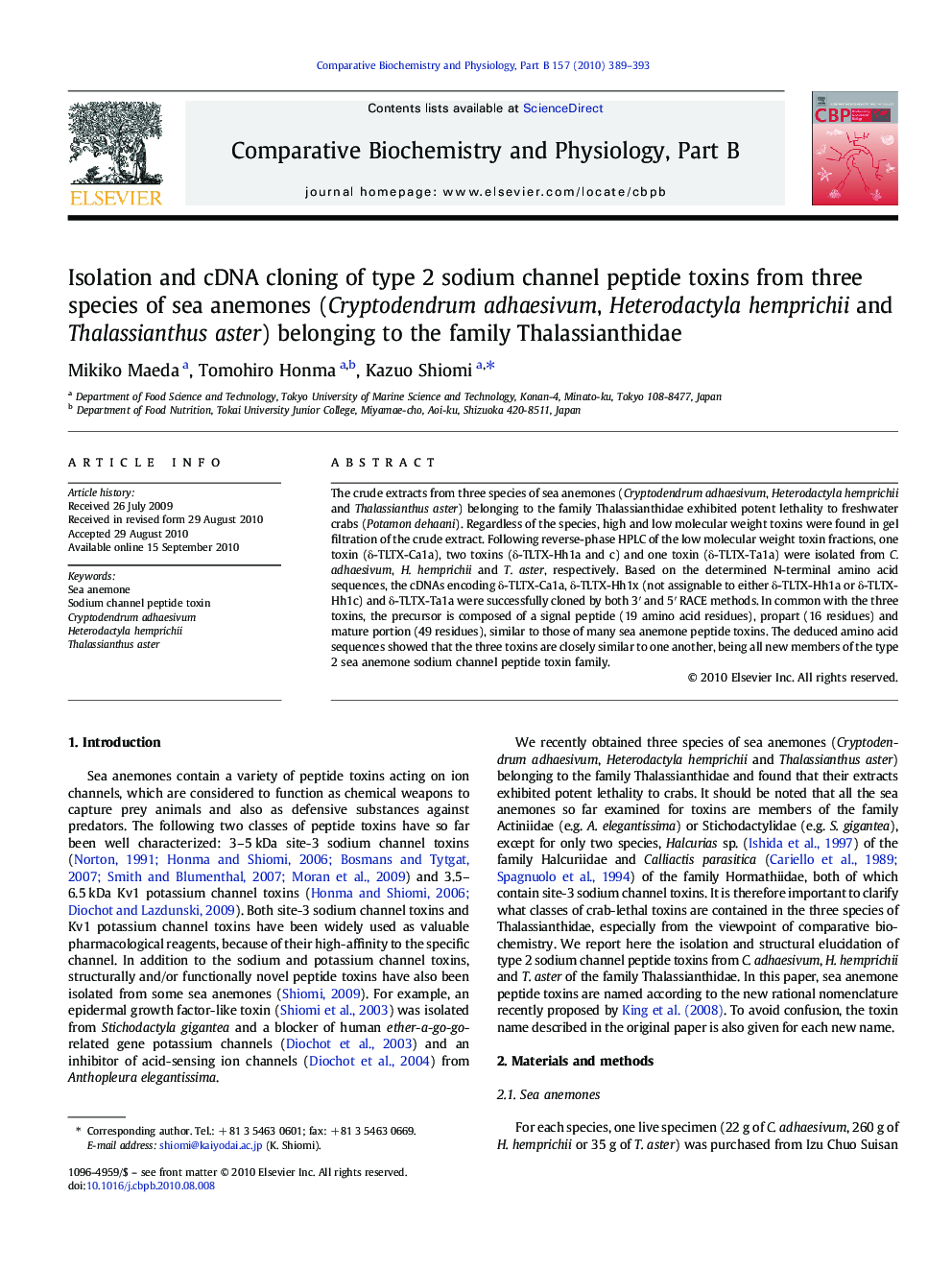| Article ID | Journal | Published Year | Pages | File Type |
|---|---|---|---|---|
| 1975675 | Comparative Biochemistry and Physiology Part B: Biochemistry and Molecular Biology | 2010 | 5 Pages |
The crude extracts from three species of sea anemones (Cryptodendrum adhaesivum, Heterodactyla hemprichii and Thalassianthus aster) belonging to the family Thalassianthidae exhibited potent lethality to freshwater crabs (Potamon dehaani). Regardless of the species, high and low molecular weight toxins were found in gel filtration of the crude extract. Following reverse-phase HPLC of the low molecular weight toxin fractions, one toxin (δ-TLTX-Ca1a), two toxins (δ-TLTX-Hh1a and c) and one toxin (δ-TLTX-Ta1a) were isolated from C. adhaesivum, H. hemprichii and T. aster, respectively. Based on the determined N-terminal amino acid sequences, the cDNAs encoding δ-TLTX-Ca1a, δ-TLTX-Hh1x (not assignable to either δ-TLTX-Hh1a or δ-TLTX-Hh1c) and δ-TLTX-Ta1a were successfully cloned by both 3′ and 5′ RACE methods. In common with the three toxins, the precursor is composed of a signal peptide (19 amino acid residues), propart (16 residues) and mature portion (49 residues), similar to those of many sea anemone peptide toxins. The deduced amino acid sequences showed that the three toxins are closely similar to one another, being all new members of the type 2 sea anemone sodium channel peptide toxin family.
